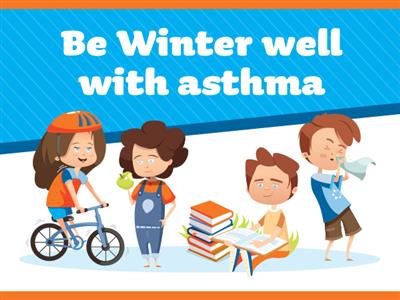Key Point: Asthma hospitalisations are set to place additional pressure on hospitals as we reach annual peaks, people are being advised how to take better care of their asthma symptoms alongside this year’s unprecedented flu season.
From now until October, rates of asthma hospitalisations reach annual highs and are set to place additional pressure on hospitals alongside this year’s unprecedented flu season.
Asthma Australia is advising people with asthma how to take better care of their asthma symptoms to reduce risks of an unpleasant asthma emergency.

In addition, they are encouraging calls to 1800 ASTHMA (1800 278 462) which can provide direct, personal assistance to people having trouble with their asthma.
CEO of Asthma Australia Michele Goldman says for 2.7 million Australians, taking preventer medication regularly and understanding your triggers is the best protection.
“Well controlled asthma is less likely to cause you problems,” she said.
“People need to be extra vigilant as we continue to move through the winter flu season. Getting the flu or a cold can escalate asthma symptoms very quickly. It can place you in a life-threatening situation if your asthma is not well managed.”
She said don’t delay in seeing your GP if you need an asthma script renewal, an Asthma Action Plan or the flu shot.
The national peak body for asthma is further warning that if you’ve had influenza or contract it, then asthma can also mean higher risk of secondary respiratory infections like pneumonia and bronchitis, extending periods of illness.
Ms Goldman said to remain cautious post a cold or virus “keep a close eye on coughing, breathlessness and prolonged fatigue.”
If you have asthma the first line of defence is to gain control of your symptoms using asthma preventer medication daily as prescribed and to keep a blue reliever puffer on hand at all times.
Those who are over 65 years are being advised that breathing difficulties are not a normal part of aging and if you are experiencing reduced breathing capacity due to a cold or flu, you are being advised to get checked for asthma or other respiratory infections.
“Many people who are over 65 don’t recognise asthma symptoms if they present during a cold or flu because it could be the first time in their life. Late onset is common and leads to high rates of hospitalisation, secondary infections and premature deaths,” Ms Goldman said.
“I urge doctors to investigate for signs of asthma in this age bracket, we see poor asthma management in the elderly, leading to the high rates of hospitalisations at this time of year” she said.

Practicing good winter hygiene, getting the flu shot and staying home if you’re sick are all key measures to take to avoid the flu or from spreading it, according to health authorities.
Asthma Australia’s Winter Well checklist provides advice on how people with asthma can manage their health during winter. It includes steps like getting enough vitamin D and regular exercise.
View the Winter Well checklist or for confidential phone support about asthma call 1800 ASTHMA (1800 278 462) to speak to an Asthma Educator.
Statistical references
Among adults, hospitalisations for asthma are highest in winter and early spring (June through to September), particularly in people aged 65 years and older (Figure 5). This coincides with the annual winter ‘flu’ season and may reflect the rise in respiratory infections observed then.

South Australia continues to have the highest rates of asthma hospitalisations per 100,000 population.
|
Age Standardised Hospitalisations by State and Territory 2016/17 |
||||||||
|
Number |
Age-standardised rate per 100,000 |
|||||||
|
State/Territory |
0-19 |
20-44 |
45+ |
All ages |
0-19 |
20-44 |
45+ |
All ages |
|
ACT |
254 |
141 |
141 |
536 |
246.1 |
87.8 |
101.3 |
133 |
|
NSW |
7,908 |
2,154 |
3,667 |
13,729 |
411.4 |
79.5 |
117.4 |
177.4 |
|
QLD |
3,815.0 |
1,911 |
2831 |
8,557 |
304.9 |
113.7 |
149 |
174.9 |
|
SA |
1,886.0 |
583 |
858 |
3,327 |
469.1 |
104 |
114.1 |
197 |
|
NT |
161.0 |
141 |
140 |
442 |
226.1 |
138 |
200.1 |
174.2 |
|
WA |
1,182.0 |
522 |
879 |
2,583 |
179.9 |
56 |
91.2 |
100.4 |
|
Victoria |
5,668.0 |
2,604 |
3356 |
11,628 |
373.3 |
116 |
138.5 |
189.4 |
|
Tasmania |
239.0 |
189 |
434 |
862 |
195.8 |
122.7 |
180.7 |
168.2 |
|
Australia |
21,198 |
8,315 |
12,358 |
41,871 |
350.5 |
97.3 |
128.6 |
173 |
Source: Public Health Information Development Unit (PHIDU) 2018, Asthma Atlas of Australia. Adelaide: PHIDU





 1800 278 462
1800 278 462



